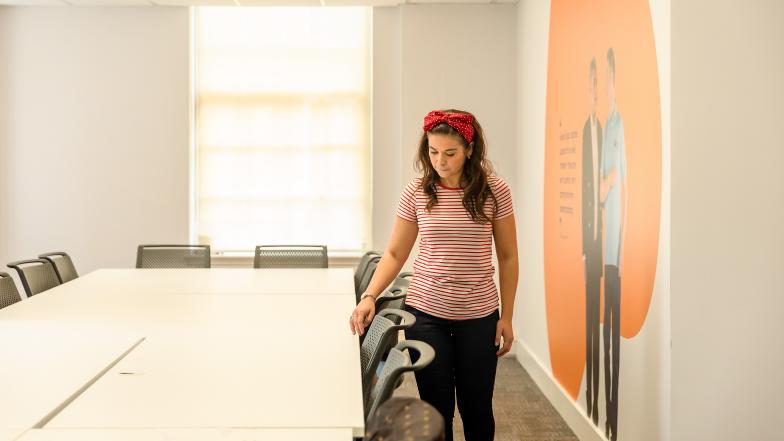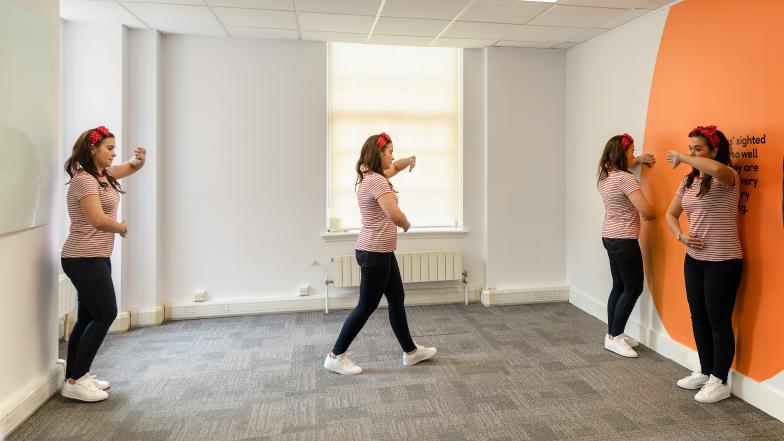Learning the layout of a room (room familiarisation)
When you enter a room that is unfamiliar, it can be more challenging to move around it. The following checklist is a technique to help you learn the layout of a new room.
Get a sense of the room
If you have someone with you, ask them to give you a verbal description of the room, including the layout, its location in the building, and key objects or furniture in the room which can act as landmarks.
On entering the room, place yourself by the handle side of the door (not the hinged side). This means you aren’t behind the door, just in case anyone else enters.
Give yourself some time to take in all the sensory information (sounds, smells and light sources) and if you have residual vision scan around to see what you can identity.
Searching the perimeter
- Make an initial search of the area immediately around you. This is known as your base or start point, which you will return to on several occasions while you search the perimeter.
- Using the trailing technique start to explore one side of the room, on contacting the corner return to your start point, the door.
- If you come across any features remember their location and any relevant information along each route. Some people like to label the walls they are travelling along.
- Once you have completed the perimeter search of the room you can then move on to identifying what is in the centre of the room using the grid pattern technique.
The grid pattern
- With your back on the wall (next to handle side of the door), square off and using the upper and lower body protection techniques to cross to the opposite side of the room.
- If you find any objects, explore them and then negotiate them. Continue to cross to the other side, making a mental map of key features and landmarks.
- On reaching the opposite side, take a few paces either left or right, then cross back to the opposite side.
- This procedure continues until you have travelled the entire width of the room.


